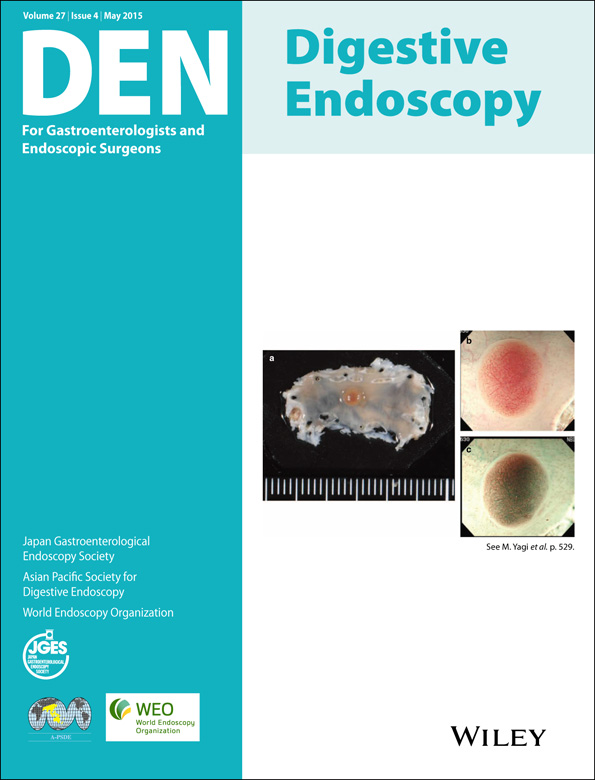Magnetic endoscope imaging in single-balloon enteroscopy
Abstract
Background and Aim
Magnetic endoscope imaging (MEI) provides continuous viewing of the position of the endoscope on a monitor without using X-ray and has already been established for colonoscopy. The aim of the present study was to evaluate a new MEI probe for enteroscopy.
Methods
In this prospective feasibility study, consecutive patients received single-balloon enteroscopy guided by the new MEI probe. Fluoroscopy was also used in all examinations. MEI images were compared to fluoroscopy images with respect to concordance of loop configuration by two independent observers after the examinations. Main outcome measurement was the rate of concordant MEI and fluoroscopy images with respect to loop configuration.
Results
In all 10 patients, single-balloon enteroscopy with MEI was carried out without any adverse events or technical difficulties. Concordance of MEI and fluoroscopy images was seen in 36/38 images (95%; 95% CI, 82–99%) by both observers. Overall agreement between the two observers was 95% (κ = 0.47, 95% CI, −0.04–1).
Conclusion
The use of MEI in single-balloon enteroscopy is safe and feasible. Detection and control of loops can be accurately achieved.




